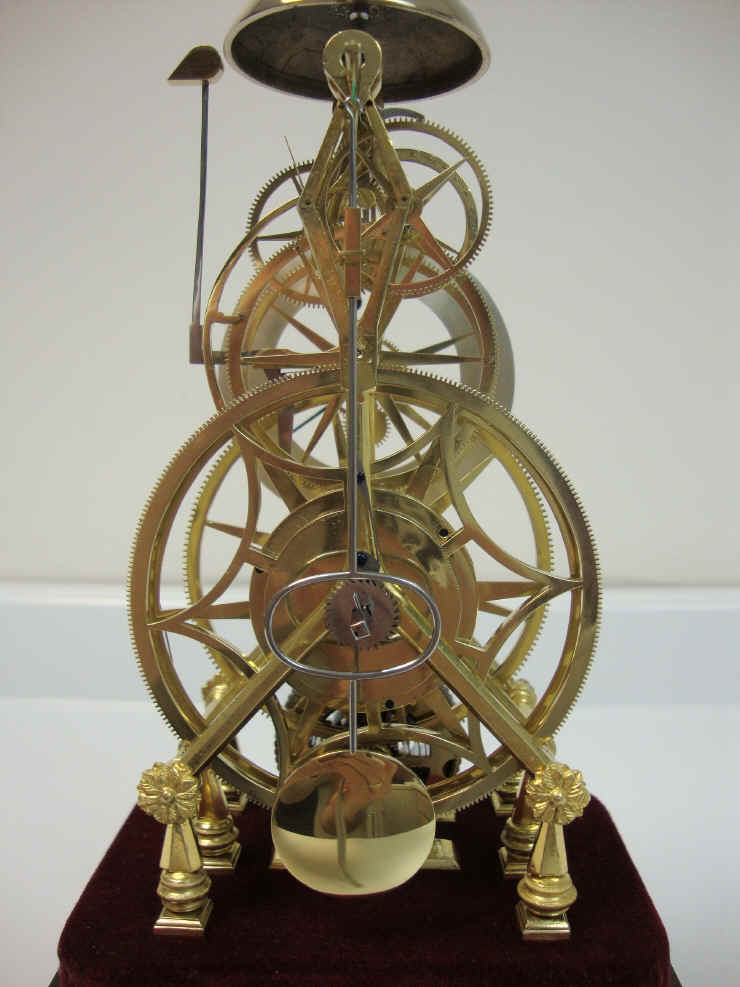


Maker, probably Jefferys &
Gilbert, France. c. 1820's. Movement 7.5"h x 3.5"w x 2.5"d. /
13.5"h x 6"w 4.5"d over dome. Double 'Y' frame,
pinwheel escapement, silk suspension, count wheel strike, eight day duration.
Click on pictures for more detail.




An interesting miniature great wheel, unlike any I've encountered. This great wheel has
too trains with full hour and half hour striking. Great wheel clocks are usually time
train only and in the 'Y' frame configuration the two train variety are
virtually unknown. From the front the clock looks like a conventional great wheel design
(first photo). However, here the similarities end. There is an additional center frame
that divides the time train (front) from the strike train (rear) making this a
double-framed movement. While the time train employs a fusee system that winds from the
front, the strike train uses a going barrel wound from the rear. The second, rear great
wheel employed in the strike train has a 36 hour count wheel mounted to it.
There is a wide variety of wheel crossings used throughout the movement from a
conventional four, to five and then six spokes and culminating in the fanciful,
curvilinear design used in the strike train's great wheel. Wheels are wafer thin and
crossings are in the traditional French star pattern exhibiting an exaggerated taper from
the hub to the rim. Frames are stippled; gilded and held together with decorative,
threaded rosettes. Pillars ends decorated with fine turning and knurling.
There is a clock illustrated in Continental and American Skeleton Clocks, pp. 74
that has identical rosette frame fasteners, frame feet and frame stippling and
contours as this example, but, however is a single train as are all of the other examples
I have seen.
This clock was expertly renovated by John R. Shallcross F.B.H.I. in 2010.
Provenance: Christie's, New York, USA, June 17, 2005; Lot #43. Formerly from the
R.O. Schmitt collection.


